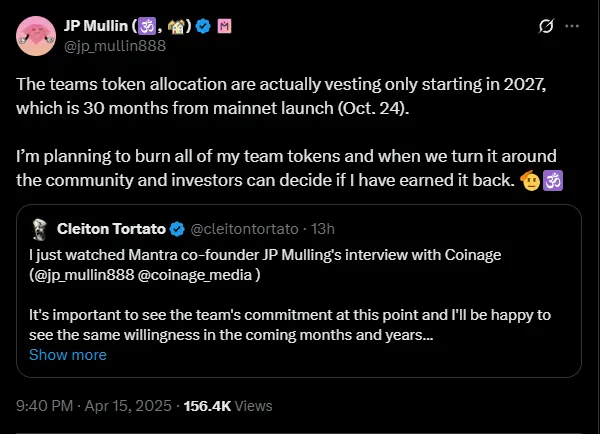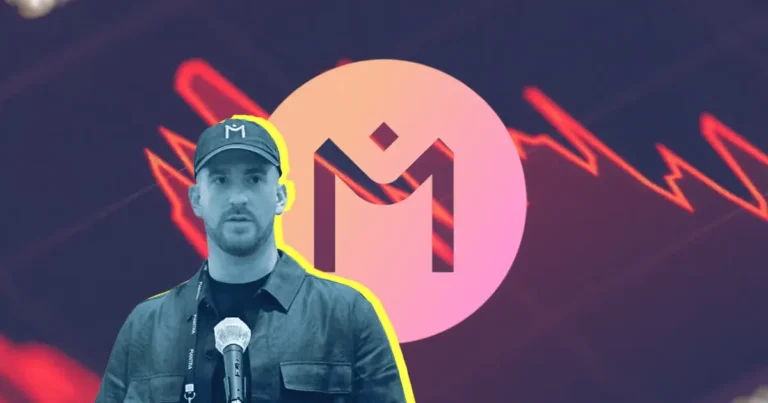16-4-2025 – In a bid to restore faith in the beleaguered Mantra network, CEO John Mullin has vowed to incinerate the entirety of his team’s token allocation, a dramatic gesture aimed at mending ties with a disillusioned community. The OM token, central to Mantra’s real-world asset tokenisation platform, suffered a catastrophic plunge on 13 April, plummeting from $6.30 to a nadir of 52 cents. This seismic collapse obliterated over $5.5 billion in value, leaving investors reeling, according to data from CoinGecko.
Mullin, addressing the crisis on X on 16 April, declared his intent to relinquish the 300 million OM tokens—equivalent to 16.88% of the nearly 1.78 billion total supply—originally earmarked for the team and core contributors. Valued at approximately $236 million at the current price of 78 cents per token, these assets were locked and slated for phased release between April 2027 and October 2029, as outlined in a company blog post dated 8 April. “By burning our tokens,” Mullin wrote, “we aim to prove our commitment. The community and investors can then judge whether I’ve earned their trust.”

The announcement has sparked a polarised response. While some in the Mantra community have lauded Mullin’s sacrifice as a sincere olive branch, others, including Crypto Banter founder Ran Neuner, caution against it. “This could backfire,” Neuner argued. “A team stripped of its incentives risks losing the drive to deliver long-term value.” To navigate this divide, Mullin has proposed a decentralised vote to determine the fate of the 300 million tokens, a move that underscores his commitment to community governance.
In parallel, Mantra is mobilising its $109 million Ecosystem Fund to stabilise OM’s price, with Mullin hinting at potential token buybacks and additional burns. Speaking to Cointelegraph on 14 April, he promised a forthcoming “post-mortem” to dissect the causes of the crash, reinforcing his pledge for transparency. The firm has also moved swiftly to quash speculation of foul play, categorically denying rumours of insider trading or market manipulation. Mantra attributes the price implosion to “reckless liquidations” tied to external market dynamics, rather than any internal missteps.
The collapse has drawn scrutiny to major exchanges like Binance and OKX, which recorded significant OM trading activity in the lead-up to the crash. Both platforms have rejected allegations of impropriety, pointing instead to volatility sparked by changes to Mantra’s tokenomics in October, which they claim triggered a cascade of high-volume liquidations across exchanges on 13 April.


